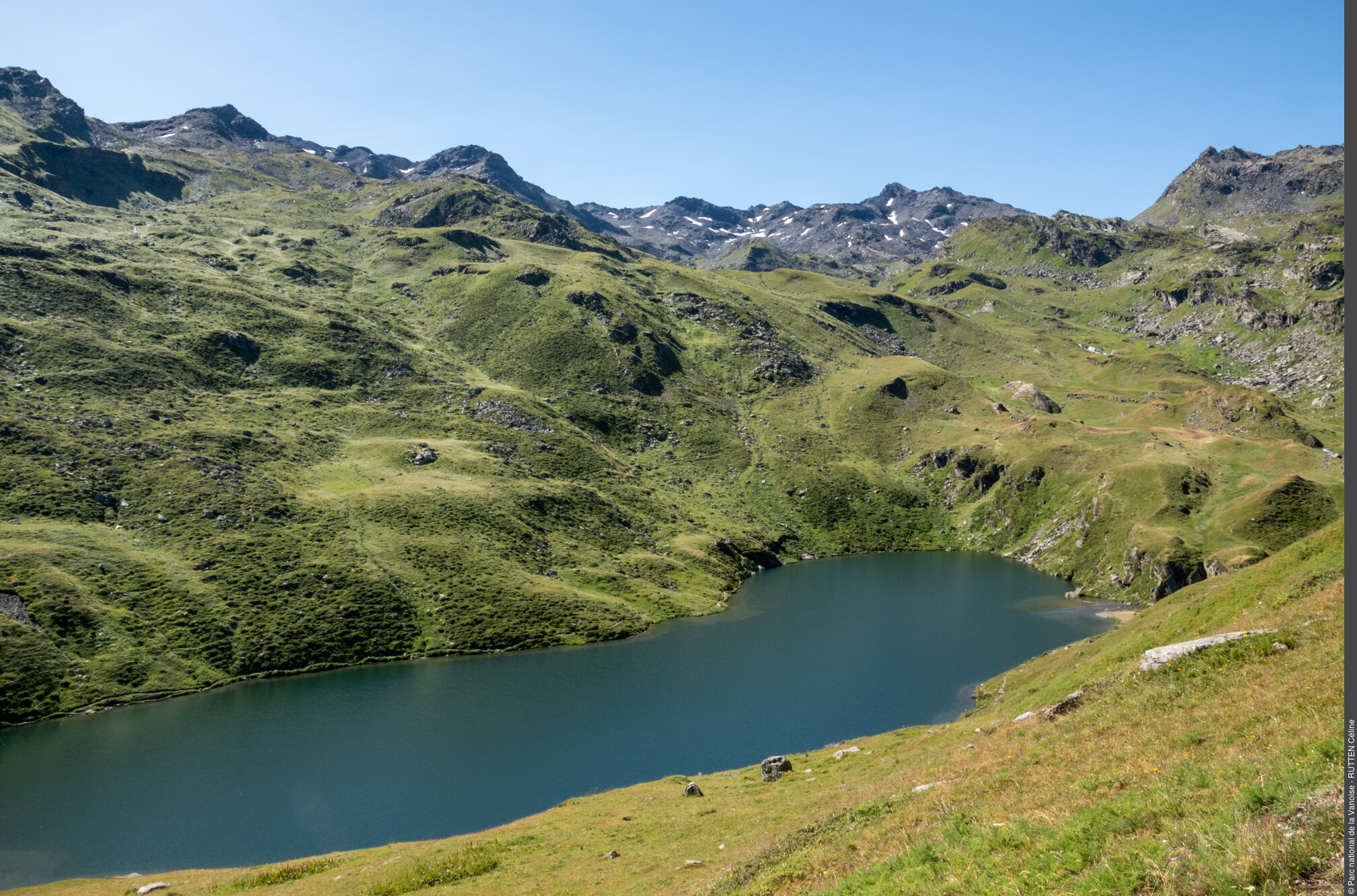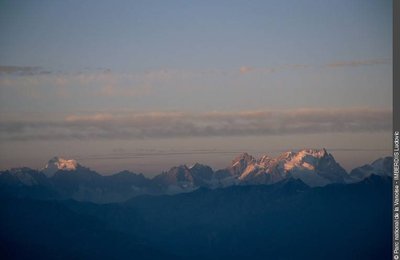
Loop of Roche Jaille
“Accompanied by Céline and Manon, I leave the Plan d´Eau des Bruyères going over the drop to leave the last traces of civilisation behind me. The Col de Pierre Blanche offers as a first reward an extensive landscape with an all-encompassing view that the greatest acrobatic skiers would approve of. All that remains is to stroll horizontally over the handy ridge which invites you to take your time, the world below can wait.”
Franck Dorne, Vanoise National Park ranger
Description
From the car park, take the path that rises to the balcony above the Plan de l´Eau and follow it to the Refuge du Lac du Lou (about 1 hour). Just after the refuge leave the trail that gœs around the lake and head towards Lac de Pierre Blanche then the pass of the same name (approximately 2hrs 30mins). From the pass, continue to the right on the wide convenient stop and walk easily from cairn to cairn to the Col de Montfiot, hill 2,652m on the map (about 1hr 30mins). Reach the Petit Lac de Montfiot visible below the pass, then turn off to the right and the marked path gœs back down to Lac du Lou and finally Bruyères car park (approximately 2 hrs).
- Departure : Plan de l'Eau des Bruyères car park
- Arrival : Plan de l'Eau des Bruyères car park
- Towns crossed : LES BELLEVILLE and SAINT-MICHEL-DE-MAURIENNE
Forecast
Altimetric profile
Recommandations
Particularly fragile environment, do not depart from the paths.
Transport
Rail connection to Moûtiers. Information: www.voyages-sncf.com. Then transport by coach to Ménuires. Information: www.transavoie.com Free shuttle buses to the “Vallée des Belleville” Information: transdev Savoie. Departure for the hike approximately 1km from the village of Saint Marcel.
Access and parking
From Moutiers take the D117 in the direction of the “Vallée des Belleville”. Pass Saint-Jean-de-Belleville, then Saint-Martin-de-Belleville. At the roundabout of Ménuires continue in the direction of Val Thorens. The Plan de l´Eau des Bruyères car park is located approximately 150 m after Lugeland and at the departure of the Bruyères track on the right.
Parking :
Accessibility
Adapted toilet facilities, comfort walk accessible to those with reduced mobility around Lac des Bruyères
- Emergency number :
- 114
3 points of interest

Plan de l'Eau des Bruyères - CCCT  Fauna
FaunaLes Bruyères lake
La Bruyère and the wetlands around the lake are exceptional nature spots home to species of all kinds, including newts, common frogs and brown trout.
15 protected species at national level and 5 natural environments with European Union recognition can be found there. Since 2003 this nature spot has enjoyed Département-level protection through a biotope protection order. There is a very easy interpretation trail running around the lake, complete with educational information, to enable you to explore this remarkable ecosystem.
Intriguing heritage feature: as you head up towards Le Lou lake, you'll see the Cross of the Blessed Paul; a Spanish pilgrim who tried to cross the Alps and whose tomb can be found at Saint-Martin-de-Belleville Church.
Lac du Lou – Les Belleville - Christophe GOTTI  Lake
LakeLac du Lou
This name comes from the patois lou which means lake. Formed when the glacier retreated into a depression hollowed out by this one upstream of a rock bar, the Lac de Lou reaches a depth of 17.50 m near the torrent of Revers. Depending on the flow rate of the torrent, its surface temperature varies during the summer from around 5 to 12 degrees. Two fish species have been introduced by the fishing company, the arctic char and the brown trout. The arctic char prefers to live at depth and reproduces naturally in the alpine lakes. The brown trout requires frequent rearing because, if left to develop normally, it dœs not find the conditions necessary for its reproduction. Not as common, the sculpin and minnow, probably brought in by fishermen, have settled in the lake. Well-thought out management is necessary for each species to find its food in this relatively poor and fragile environment.

Lever de soleil sur le Dôme des Écrins, le Rateau, la Meije (de g. à dr.) - Ludociv Imberdis  Summit
SummitRoche Jaille
The summit of Roche Jaille is almost the highest peak of the route. At an altitude of 2,690 m, it offers a view of the surrounding mythical summits with Mont Blanc to the north, the highest peak of the Alps (4,855 m) and the Meije to the south (3,984 m). Closer to the west, the Grand Perron des Encombres (2,824 m) is home to a population of alpine ibex.
